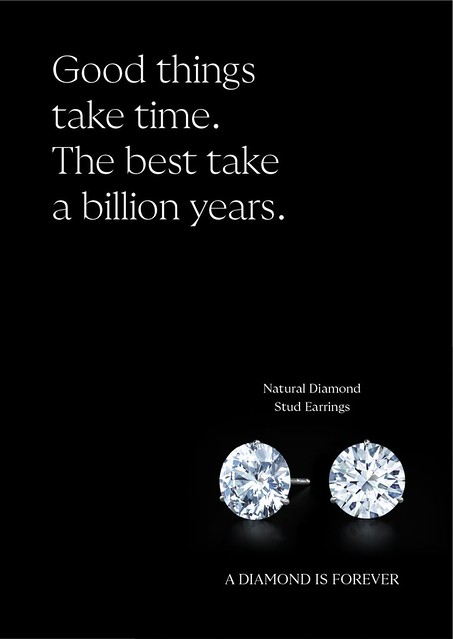CX research
IPSOS conducts CX research on an annual basis. They surveyed 1,000 CX (customer experience) specialists around the world about the current state of CX in their businesses. The IPSOS CX research painted a complex picture of organisations. Key take outs of the CX research:
- 82% of respondents believed that CX investment will provide a competitive edge, but only 52% were expecting an increase investment over the next 12 months.
- 28% of respondents admitted that their organisation’s CX was worse than promised and only 15% of respondents consider their organisations ‘CX leaders’.
- Only 52% have CX governance policies in place.
At the present time the majority of CX leaders have data integration issues and 46% now have to integrate AI as well, adding to their business challenge.
Beauty
Hailey Bieber Fulfills Glazed Donut Promise, Announces Rhode x Krispy Kreme Collaboration – Fashionista – via BBH Singapore’s Culture Bleats newsletter
Business
Games Workshop: model maker represents the best of Britain | Financial Times
China
Foxconn offers higher hourly rates for workers in Shenzhen at its Huawei production unit than its iPhone operation | South China Morning Post – Foxconn’s FIH unit manufactures handsets and electronics devices for Huawei and other smartphone firms. Although China remains its most important production centre, Apple has been diversifying its supply chain amid rising geopolitical tensions.
China denies claims of iPhone ban, but leaves vague hints | DigiTimes
China’s coming lawfare offensive | Financial Times
Consumer behaviour
By far the biggest risk factor for suicide is being male | Of Boys And Men
Culture
The news report that drove mainstream interest in the new romantics or blitz kids as they are sometimes known.
Economics
Omdia: Semiconductor Industry Reverses Downtrend, Achieves 3.8% Revenue Growth in 2Q23
The rise of surge pricing: ‘It will eventually be everywhere’ | Financial Times – this will drive inflation as it maximises revenue more efficiently
Ethics
Environmentally friendly clothing brand Patagonia gets called out about the ‘greenwashing’ design of its buffalo work boots by the Rose Anvil YouTube channel who specialise in analysing boot and shoe design.
Finance
$56M in London property tied to alleged China crime ring — Radio Free Asia
Health
Juul got young people hooked on nicotine—Blip wants to help them quit | Fast Company
How to
Project Gutenberg Audio books – thanks to our Matt
Ideas
John Lanchester · Get a rabbit: Don’t trust the numbers · LRB 21 September 2023
Innovation
MEMS builds tiny space thruster that runs on water | EE News Europe – Researchers at Purdue University showed a water-based thruster for nano satellites in 2017.
No-hands driving | Axios – on ADAS
Thermoelectric Cooling: Paving the Path to AV Safety – EE Times
Luxury
Timed out! Rugby World Cup 2023 referees not wearing watches due to sponsor dispute | Stuff.co.nz – in some ways Tudor are very much like their big cousin Rolex. This move came across as petty, the problem is that Tudor seems to have made mistakes in its sponsorship and doesn’t have the gravitas of Rolex.
Daring Fireball: Hermès Still Sells Leather Apple Watch Straps, But Only Through Their Own Store – which is very different to the impression that Apple gave during their autumn keynote ‘Wanderlust’ event.
Standard Model: The Chanel J12 Eclipse Set – LUXUO – interesting, particularly given the manufacturing problems that Rolex has had with dual colour ceramic bezels. Chanel has managed to master this and master it across the whole watch. Matching bezel and case divisions.
Interesting analysis on supercar prices.
Profile of Lacoste.
Marketing
A few days of lunch time viewing from the IPA (Institute of Practitioners in Advertising) media planning and strategy summit. Interesting mix of presentations and case studies.
Really interesting case study on McDonalds and how the brand has evolved over two decades in the UK.
KFC’s Colonel Sanders in Street Fighter 6 is finger breakin’ good | Yahoo! News – has also transformed wardrobe with a Loro Piana look.
The Unspoken Truth About CMO Churn | AdWeek
Online
Labs | Last.fm – I have used last.fm for 20 years and still love their experimental data visualisations.
China Sows Disinformation About Hawaii Fires Using New Techniques – The New York Times – using LLMs to generate misinformation materials.
How social media killed the protest | Financial Times
New emoji launch in association with Unicode which goes into how emojis became mainstream.
Security
Inside The Ransomware Attack That Shut Down MGM Resorts and more here: MGM, Caesars File SEC Disclosures on Cybersecurity Incidents | Dark Reading.
China’s de-risking strategy predates US, EU efforts | Quartz – it goes back to the 1980s efforts of China.
Saab buys into unicorn AI startup | EE News Europe – the focus includes use of autonomous vehicles (land, sea and air), electronic warfare and surveillance capabilities.
How I got to know Westminster’s ‘Chinese agent’ | The Spectator and China trying to headhunt British nationals in key positions, UK says | Reuters. Sunak admits UK needs more investment to combat China’s security challenge | Financial Times – it’s going to have to get smart soon.
Lithuania gets called out: Revealed: The Country that Secretly Wiretapped the World for the FBI | 404 Media.
Software
Centaurs and Cyborgs on the Jagged Frontier | One Useful Thing – on AI futures
Style
The evolution of sneakers from functional kicks to high-value commodities – ABC News
Taiwan
Taiwanese civilian drone suppliers are tapping into the defense sector | DigiTimes
Technology
Huawei’s Kirin 9000S chip made by SMIC is only a breakout, not a breakthrough
What This Year May Well Bring for the eFPGA – EE Times – embedded FPGAs allow for in-life product upgrades
Telecoms
How two SATCOM companies are responding to Starlink’s dominance

